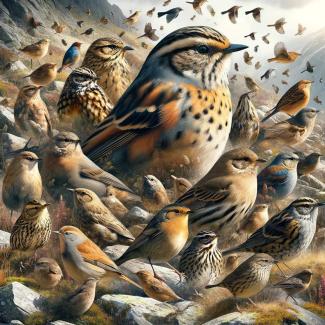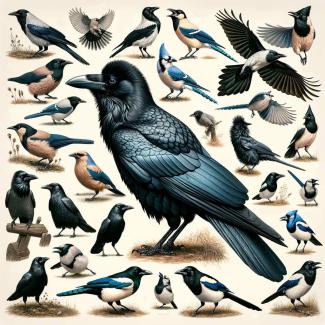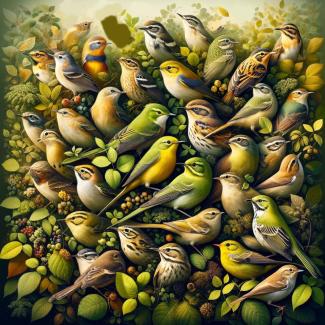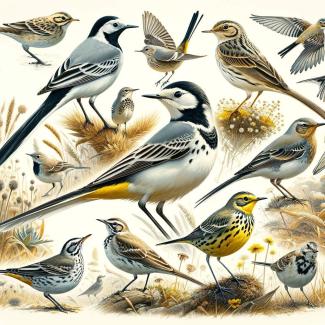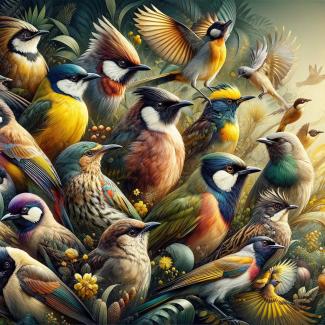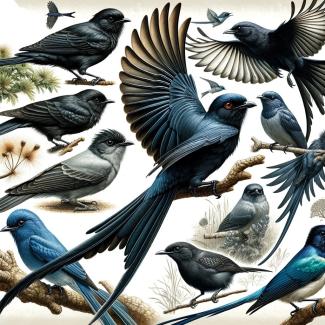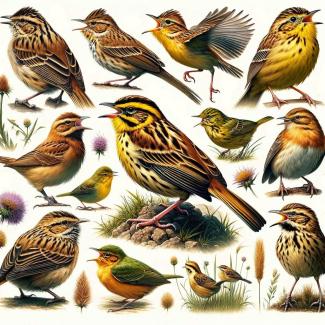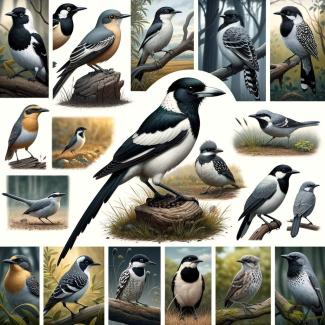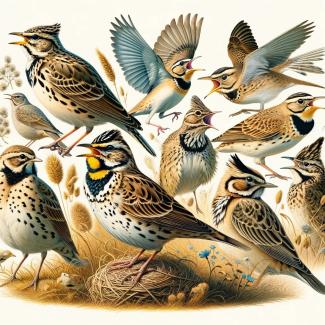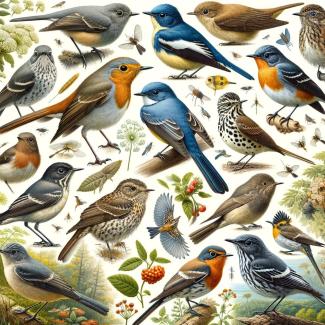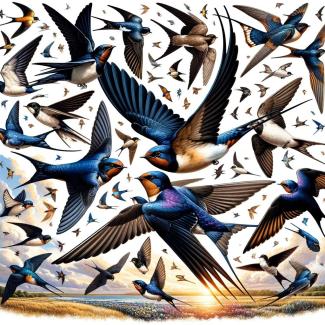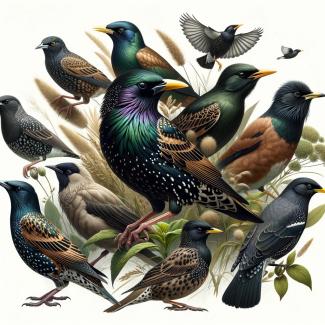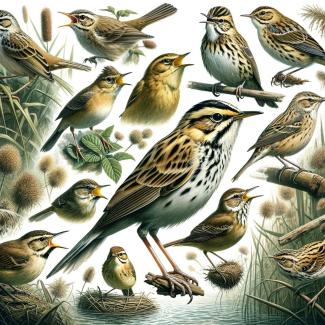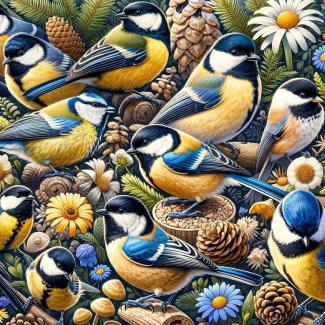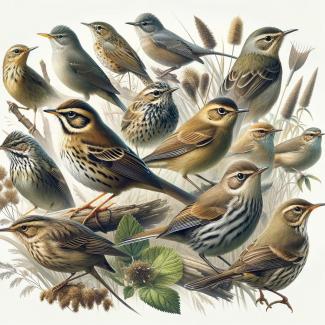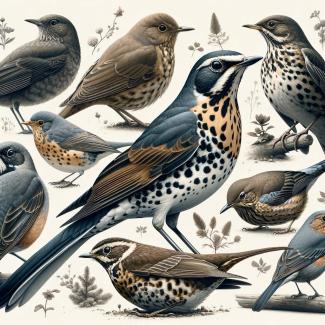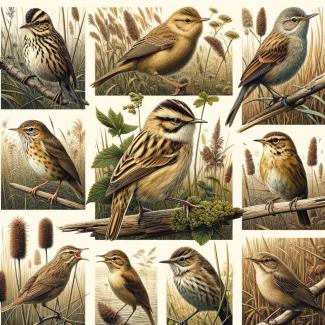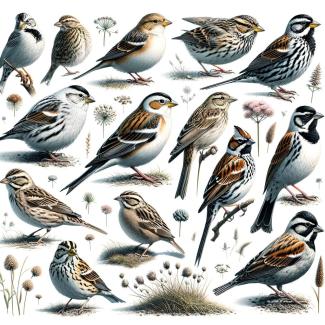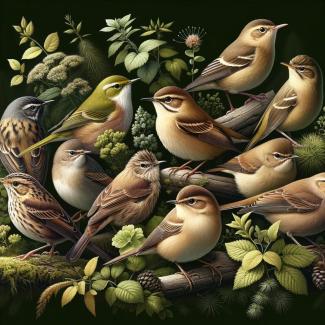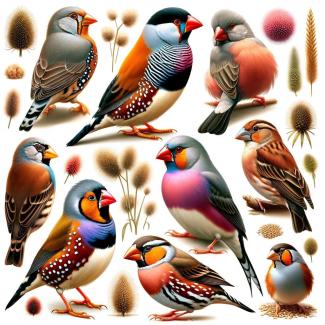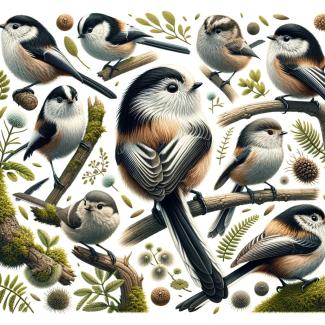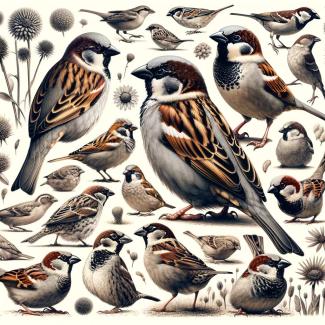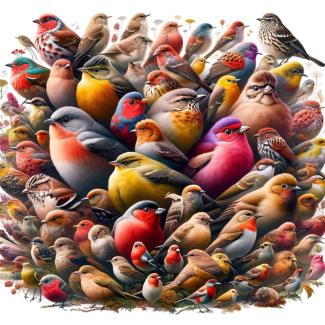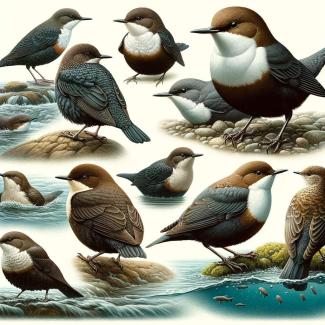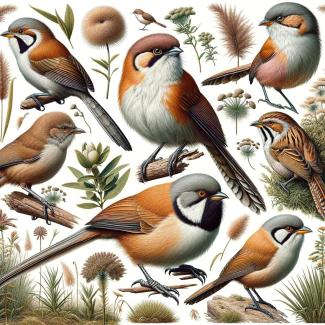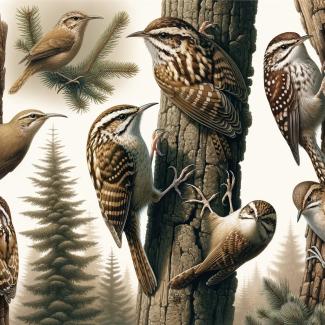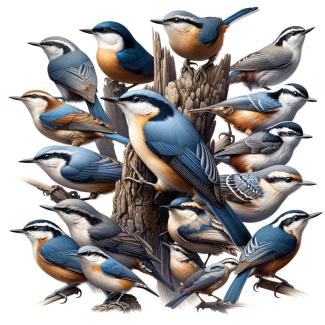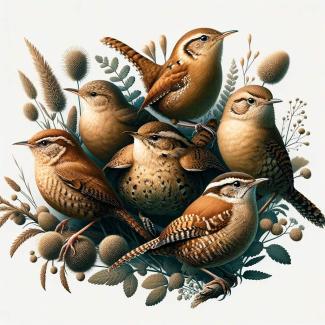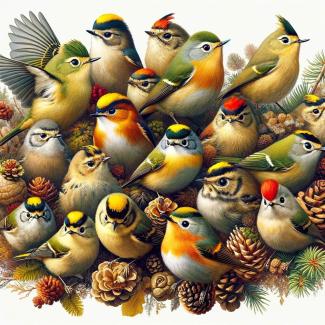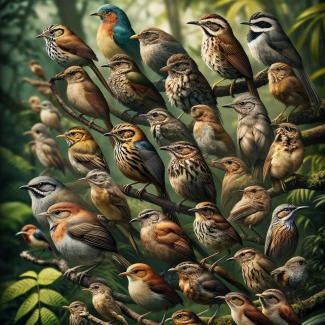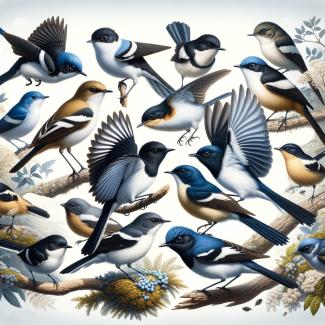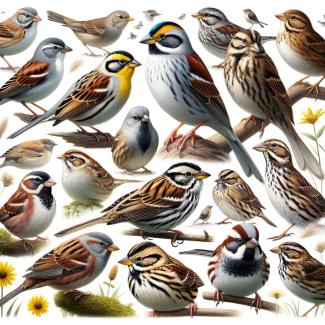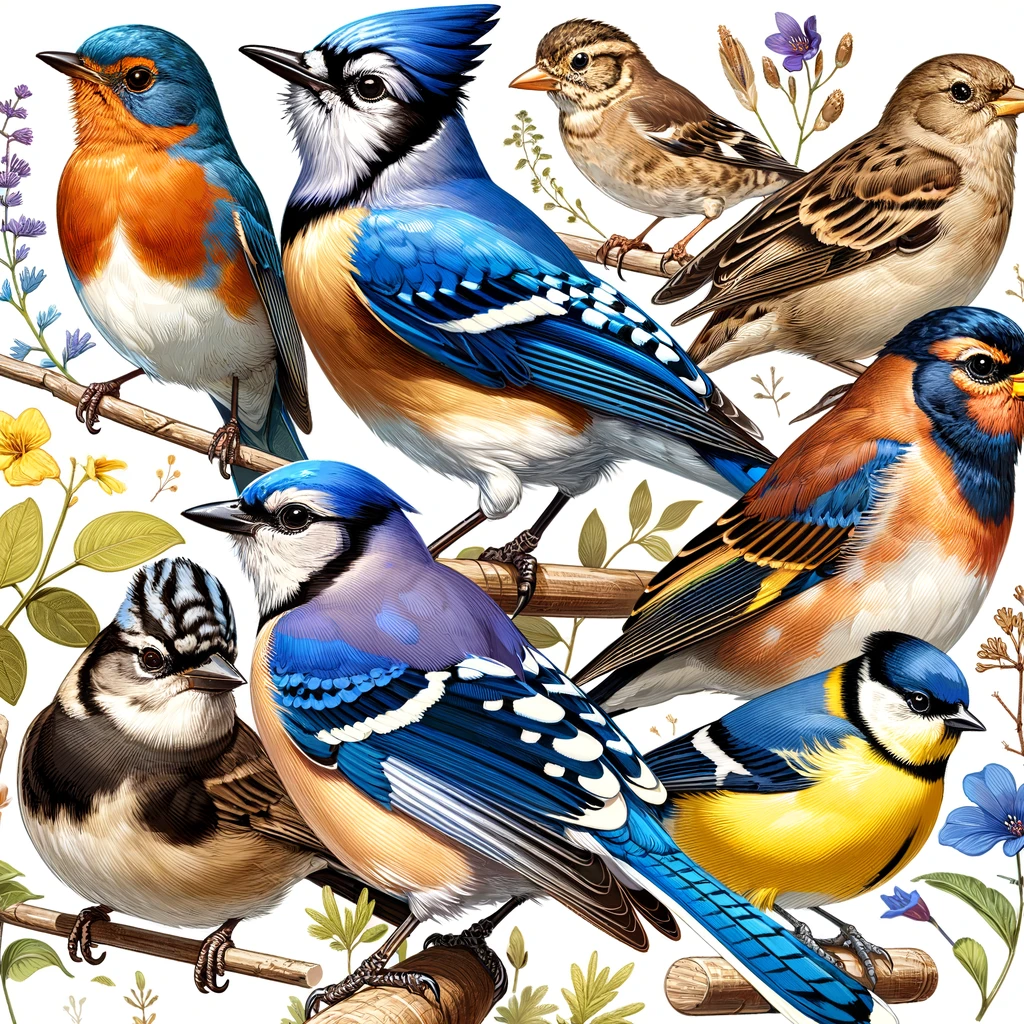
Encompassing over 60% of all bird species from crows and swallows to birds-of-paradise and mockingbirds, Passeriformes represents the largest avian order with over 6,000 species distributed globally.
Passerines trace evolutionary origins back to specialized Australasian proto-perching forms emerging alongside ancestral parrots and songbirds around the K-T boundary over 50 million years ago. From isolated island-hopping lineages later radiating outward came explosive differentiation spurred by continental colonization dispersals reaching dual Northern and Southern hemisphere destinations.
Today Passeriformes birds occupy nearly every terrestrial habitat worldwide thanks to incredible adaptive radiation. Seed predation forms like finches excel across open habitats while warbler probing techniques harvest hidden arthropods across tropical canopies. Lyrebirds scratch leaf beds as shrikes and vireos skewer prey atop exposed perches over expansive vistas.
Even extreme environments like tundra, deserts, and alpine zones support passerine residents thanks to versatile skills surviving challenging yet abundant seasonal niches.
United by shared foot anatomy granting flexible perching postures facilitating food handling alongside highly developed song culture and vocal learning capacities, Passeriformes represent the definitive perching order sustaining aerial skills granting immense colonization capacities while retaining grounded terrestrial lifestyles.
Characteristics
Physical Features
Passerines span a vast size gradient - from minute 5-gram tits to imposing 1.5-meter Southern Cassowary giants. But overall, most adult bodies remain modestly sized around 10-30 centimeters in length. Bills vary dramatically from slim insect-probing forms to massive parrot-like seed crushers.
Plumage displays remarkable variation in common patterns - from drab streaked camouflage cloaking secretive antbirds to extravagant sexual dimorphism ornamenting birds-of-paradise. Iridescence, skin flap display features, and tail streamer shapes facilitate visual communication important across forest floors with limited visibility.
Vocalizations form a core passerine feature for most species thanks to advanced syringeal throat organ control over a lyrebird’s 8 separate muscle pairs. Innate calls signal alarms or pair connections while learned regional dialects and mimicry encode relationships across flocks. Song often transfers culture between generations by specific tutor imprinting on juvenile memory encoding future courtship performance vital for breeding success.
Behavioral Traits
Dietary habits span carnivorous birds like shrikes skewering vertebrate prey to nectarivorous sunbirds and hummingbirds feeding on suspended flowers. Most passerines fall along an omnivorous spectrum consuming insects, fruit pulp, seeds, and nectar sources. Versatile beaks allow granivorous finch cracking power or slender probing tips to access hidden arthropods.
Gregarious flocking occurs around fertile resources but shifts towards territorial breeding displays meant to repel rivals using cultural songs reflecting localized group relationships. Highly socially cooperative breeders also assist in raising offspring amidst communal nest clusters centered around kinships.
Reproduction and Lifespan
Cavity excavators, intricately woven cup nest builders and scrape depression ground nesters reflect the breadth of nest site preferences across lineages. Typical clutch sizes range between 2-6 speckled eggs for altricial young requiring extended brooding and provisioning from monogamous pairs. Average lifespan estimates generally fall between 2 to 6 years. Though larger corvids have exceeded 20 years and tiny mountain chickadees approach a decade as well in rare examples.
Extant Families
The immense diversity of Passeriformes spans over 120 extant families - making it the most speciose terrestrial vertebrate order on Earth. Families showcase specializations filling nearly endless niches:
Muscicapidae (Old World flycatchers)
The over 300 species of Old World flycatchers occur across Europe, Asia, and Africa as insectivore specialists common in forest and scrubland habitats. They often showcase bright plumage in males. Short bills and energetic flight capacities aid the aerial pursuit of flies, bees, butterflies, and more amidst breeding territories announced through persistent song delivery performances meant to repel rivals.
Fringillidae (finches)
This prolific family of over 120 species flourishes across the Holarctic realm down into Southeast Asia tropical zones by granivorous habits able to exploit diverse grass, herb, and shrub seeds. Conical bills efficient at hulling husks accompany sociable flocking tendencies concentrating seasonal movements around ripening grain and thistle growths across vast open habitats.
As the most abundant order globally, convergent traits repeatedly emerge across Passeriformes like territorial defense and nest construction. However dietary and habitat strategies partition families limiting competition through specialization. Thereby passerines discovered endless diversification options founded upon supreme versatility as terrestrial aerialists.
Global Distribution and Habitat
With over 6,000 species spanning more than 120 families, Passeriformes holds an extensive global distribution - inhabiting every continent to oceanic peripheries and offshore archipelagos. Only in Polar Regions do numbers decline appreciably. However seasonal migrants still push high latitude limits across Alaska and Northern Canada to Greenland and Eurasian Arctic fringes above 80° North latitude through boreal summers.
The immense dietary and behavioral plasticity underpinning the adaptive radiation of ancestral passerines essentially unlocked habitat versatility matching diverse global contexts. Aerial flycatching forms occupy stratified tropical canopies just as nectarivorous honeycreepers and sunbirds coevolved with isolated island flowers. Seed predators like finches thrive across seasonal Arctic meadows through extreme cold tolerance adaptations absent in sister taxa residing in the wet lowland tropics year-round.
Human commensalism opened novel urban exploitative paths for new urban adapters like mynas, starlings, and house sparrows that now flourish around the globe nearby thanks to ongoing association with agriculture and shelter opportunities. Thereby passerines spread across the living world thanks to expansive niche dimension partitioning potential molded over 50 million years of specialization since their Australasian ancestral stocks first took wing globally.
Ecological Importance
As the most ubiquitous and abundant order across nearly all terrestrial habitats beyond Antarctica, Passeriformes birds contribute immense ecosystem services helping uphold community stability and balance across faunal food webs.
As prolific consumers of fruits, nectar, and insects, many passerines provide essential pollination and propagule dispersal dynamics benefitting flowering plants and trees globally dependent upon reliable transfer mechanisms to spread genetic stock beyond original stand sources. Thereby passerines facilitate floral expansion and forest migrations over generations.
Insectivorous warblers, flycatchers, and tyrant species additionally check mosquito, beetle, and other often nuisance arthropod outbreaks - limiting annoyances and agricultural damages while controlling disease transmission risks continuously through relentless daily predation pressures across habitats.
Seed predation also plays similar stabilizing population impacts by rapidly exploiting sudden expansions in annual grasses, pioneer trees, and other ephemeral food bonanzas before populations might spike destructively. Thereby passerines enhance modeled stability.
And as abundant prey substrate, passerine fecundity sustains worldwide raptor, snake, and small mammal numbers while concentrating energy flows across habitats through extensive seasonal movement pathways distributing vast nutrient exchanges along migration routes. Thereby they integrate global habitats.
Passeriformes in Nepal
Nepal’s extensive forest and grassland mosaics support over 650 species of Passeriformes spanning resident tropical specialists to long-distance Arctic-breeding migrants that pass through the Himalayan foothills seasonally - making it an essential bird biodiversity hotspot location.
The middle hills sustain abundant laughingthrushes, leafbirds, and minlas alongside 30 distinct babbler species all together foraging mixed flocks through rhododendron stands. While Spiny babblers scrape along the arid Tibetan plateau outskirts. And vivid sunbirds glisten across lowland Sal forests. Several regional endemics persist but remain endangered by encroaching development like Nepal’s national bird - the colorful Himalayan monal pheasant.
Many passerines also carry spiritual symbolism - like the auspicious house sparrow motif in Hindu wedding imagery as blessings towards fertile unions. Protecting interconnected forest corridors spanning Nepal’s immense climatic gradients provides vital habitat benefiting both resident and migratory species rebuilding energy reserves along the central Asian flyway spanning continental scale journeys up to Arctic Siberia and back for dimunitive leaf warblers and flycatchers. Thereby conservation efforts uphold global connectivity throughout the region.
Conservation Challenges and Efforts
While many passerine species remain locally abundant, increasing pressures have pushed over 500 species onto threatened or near threatened conservation status lists as encroaching habitat loss compounds climate disruption across tropical forests in particular.
Deforestation threatens countless specialist frugivores and understory tropical endemics essentially unable to persist outside intact canopy conditions. Even subtle vertical simplification allowing light penetration or drying trends deteriorates humid conditions delicate hummingbirds rely upon accessing suspended nectar sources. Boreal species also face threats from northern forest clearance.
However global conservation coalitions gain momentum to intervene through Habitat corridor protections seeking to uphold connectivity across essential sites. Sylviid warblers now traverse fully protected overwintering reserves first established in India. Reverse migration tracking discovers new threats facing Cerulean warblers and wood-thrush along South American frontiers.
Captive breeding networks strive to maintain genetic diversity insurance populations until restoration efforts recover wild populations amidst regions facing extreme pressures. Community forest patrolling curbs illegal trapping amid isolated montane sites harboring rare pittas and pheasant species targeted by poachers. Thereby integrated initiatives seek to sustain passerine integrity across once healthy ranges worldwide.
Conclusion
Passeriformes' supreme dominance across global ecosystems remains nothing short of remarkable. By diversifying along countless niche axes over 50 million years, passerines unlocked an immense range of capital covering nearly all forest, field, and grassland habitats - thereby upholding community dynamics benefitting entire ecosystems through movements of nutrients, prey regulation, and floral propagule dispersals across terrestrial biomes worldwide.
However, amidst intensifying anthropogenic pressures ranging from climate shifts to rampant land conversion, the immense biodiversity engine now falters - losses beget further unraveling threatening cascading impacts towards once balanced forests and countryside. Urgent interventions to uphold zoning protections and corridor connectivity provide the last hope for stabilizing deteriorating tropical richness and long-distance migrants alike.
In Nepal, proactive landscape planning emphasizing community forest revitalization presents an opportunity to demonstrate unified people-wildlife coexistence priorities benefitting both human development and ecological continuity for resident passerines and migratory populations that converge to breed, feed, or rest across a nation essentially anchoring global flyway stability as a crossroads sheltering essential biodiversity support services along vast journeys to and from extreme wintering frontiers near the roof of the world.


